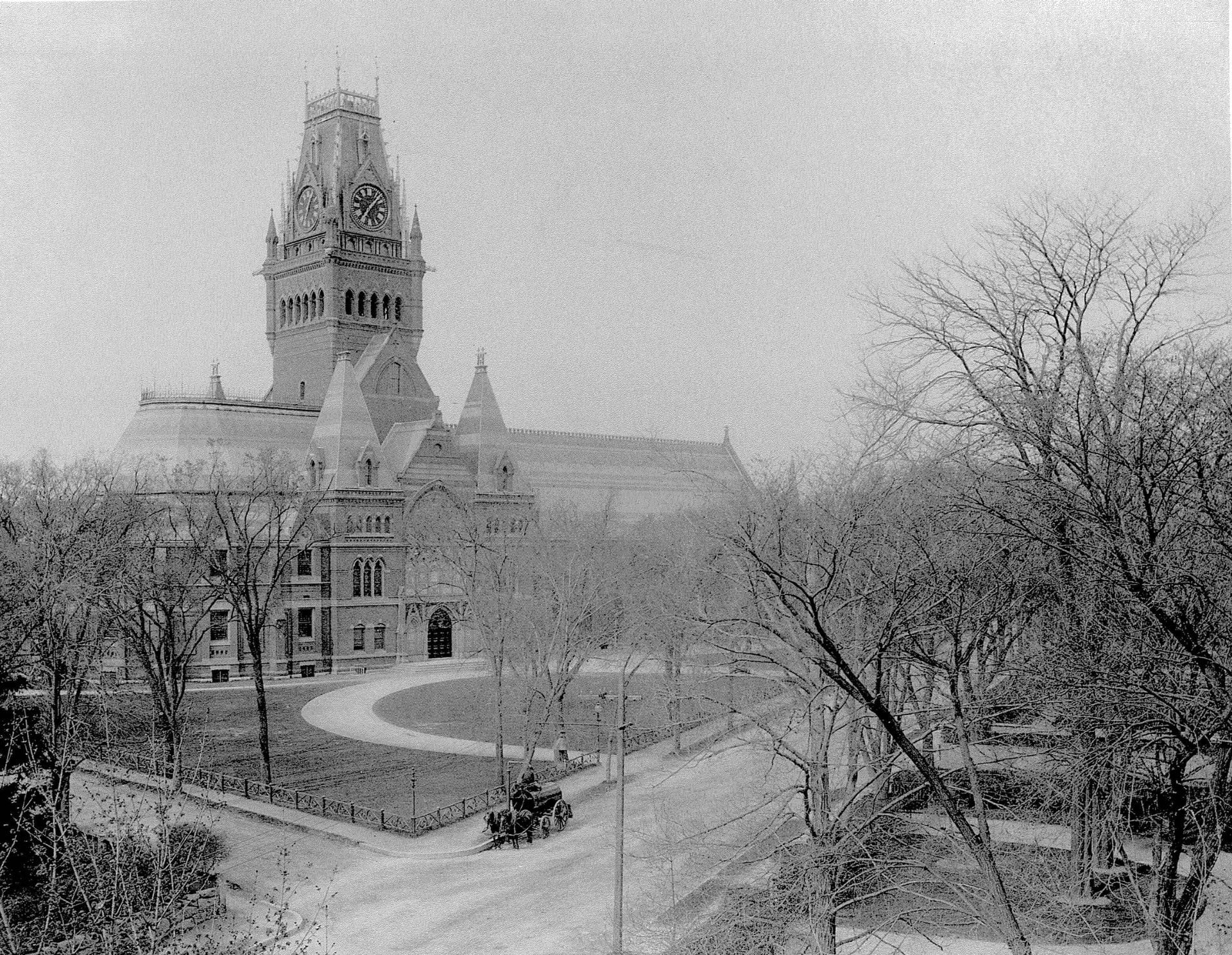
“…the most valuable gift the University
has ever received, with respect alike to cost,
daily usefulness, and significance.”
-President Eliot in accepting Memorial Hall on behalf of the University from the Memorial Hall building committee.
Following the Civil War, The Harvard Corporation gave its official sanction to a group of distinguished and diverse Harvard alumni who petitioned the college to let them raise funds for a memorial to those Harvard graduates who fought for the United States Army and Navy. The new committee of fifty Alumni suggested that the proposed memorial take the form of a building, one that would not only testify to the heroism of those who fell but also meet the college’s urgent and practical needs for a theatre and a gathering space for alumni.
The committee proposed a Hall of Alumni in which students and graduates might be inspired by the pictured and sculptured presence of her founders, benefactors, faculty, presidents and most distinguished sons. The vision was a compelling one: between 1865 and 1868, members of the committee collected a staggering $370,000, a sum equal to one-twelfth of the endowment of the University.
At the same time, Charles Sanders, who was a member of the class of 1802 and who had held the position of “college steward” from 1827-1831, had bequeathed to the College $40,000 for the purpose of erecting “a hall or theatre to be used on Commencement days, Class days, Exhibition days, days of the meetings of the society of Alumni, or any other public occasion connected with the College, whether literary or festive.” The two projects were thus joined and each helped to make the other feasible.
The site chosen for the new memorial building was that referred to as The Delta because of its triangular shape, bounded on three sides by Cambridge, Kirkland and Quincy streets. The Memorial Hall Building Committee purchased Jarvis Field (now the Law school) in order to provide a new location for the playing field that had previously occupied the Delta.
In December of 1865, the committee invited several prominent architects (all Harvard alumni) to submit designs in competition, coding them by number to ensure an impartial choice. The design of William Robert Ware, class of 1852, and Henry Van Brunt, class of 1854, was selected though it was much refined in the months and years to come. The building received its formal name, Memorial Hall, in September of 1870. A month later its cornerstone was laid. It represented a remarkable achievement by a group of committed volunteers, from conception to cornerstone in just five years. A ceremony was held on October 6, 1870, to lay the Memorial Hall cornerstone.
In 1874, less than four year’s time, the hall and the transept were dedicated for use. Sanders Theatre was substantially completed in the spring of 1875 but not used until Commencement exercises in the spring of 1876. The tower was completed in 1877.
It was in 1878 that the thirteen-year effort to honor Harvard’s fallen soldiers and transform the lives of undergraduates finally culminated with the official turn over of the building to the University.
See the Harvard classmate names listed on Memorial Transept marble plaques.